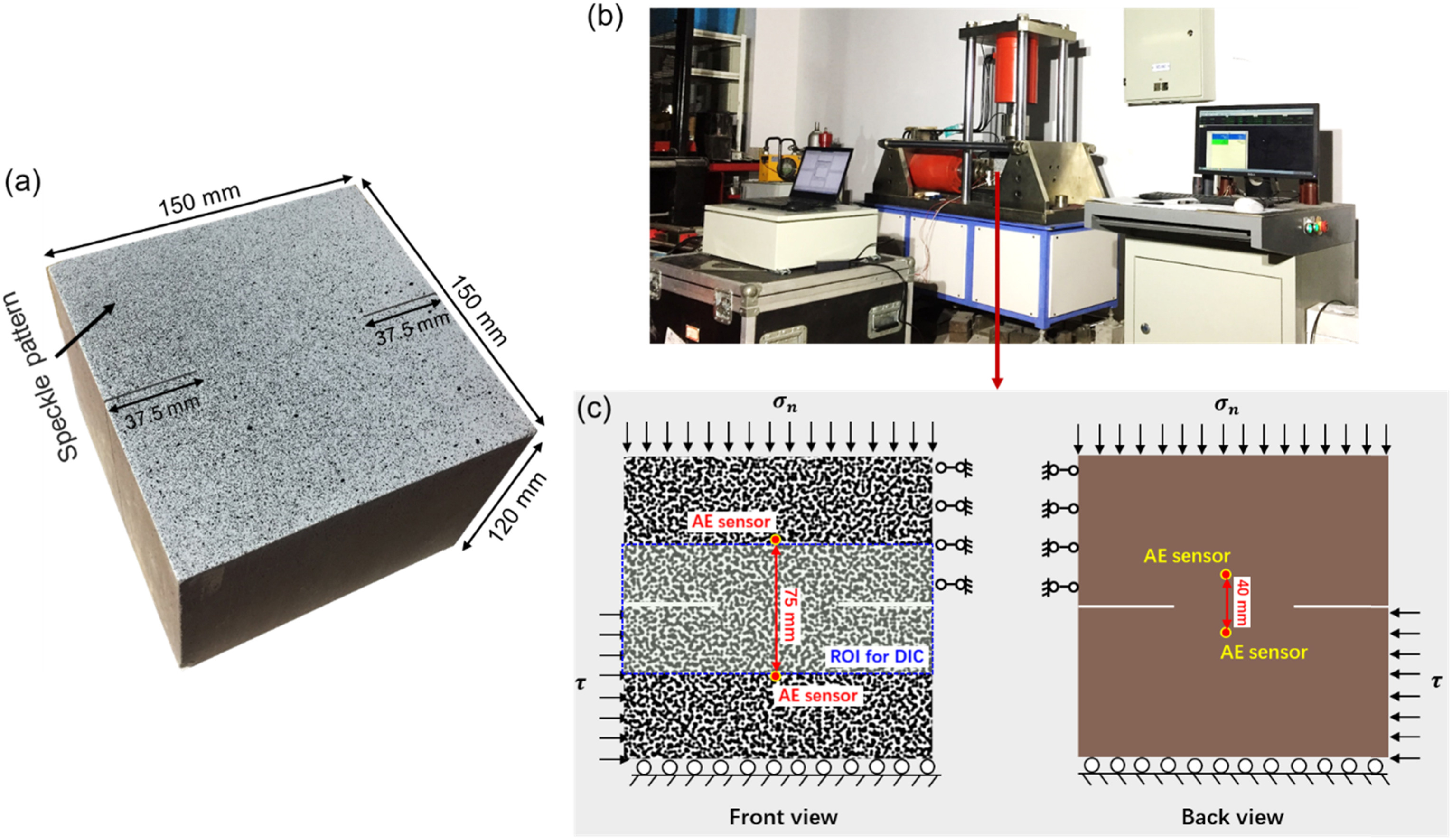JRMGE / Vol 16 / Issue 2
Shear band evolution and acoustic emission characteristics of sandstone containing non-persistent flaws
Shuting Miao, Peng-Zhi Pan, Chuanqing Zhang, Lei Huo
Show More
a State Key Laboratory of Geomechanics and Geotechnical Engineering, Institute of Rock and Soil Mechanics, Chinese Academy of Sciences, Wuhan, 430071, China
b University of Chinese Academy of Sciences, Beijing, 100049, China
c CASIC Research Institute of Intelligent Decision Engineering, Wuhan, 430040, China
2024, 16(2): 497-513. doi:10.1016/j.jrmge.2023.04.003
Received: 2022-12-15 / Revised: 2023-02-27 / Accepted: 2023-04-12 / Available online: 2023-05-16
2024, 16(2): 497-513.
doi:10.1016/j.jrmge.2023.04.003
Received: 2022-12-15
Revised: 2023-02-27
Accepted: 2023-04-12
Available online: 2023-05-16
Direct shear tests were conducted on sandstone specimens under different constant normal stresses to study the coalescence of cracks between non-persistent flaws and the shear sliding characteristics of the shear-formed fault. Digital image correlation and acoustic emission (AE) techniques were used to monitor the evolution of shear bands at the rock bridge area and microcracking behaviors. The experimental results revealed that the shear stresses corresponding to the peak and sub-peak in the stress-displacement curve are significantly affected by the normal stress. Strain localization bands emerged at both the tip of joints and the rock bridge, and their extension and interaction near the peak stress caused a surge in the AE hit rate and a significant decrease in the AE b value. Short and curvilinear strain bands were detected at low normal stress, while high normal stress generally led to more microcracking events and longer coplanar cracks at the rock bridge area. Furthermore, an increase in normal stress resulted in a higher AE count rate and more energetic AE events during friction sliding along the shear-formed fault. It was observed that the elastic energy released during the crack coalescence at the pre-peak stage was much greater than that released during friction sliding at the post-peak stage. More than 75% of AE events were located in the low-frequency band (0–100 kHz), and this proportion continued to rise with increasing normal stress. Moreover, more AE events of low AF value and high RA value were observed in specimens subjected to high normal stress, indicating that greater normal stress led to more microcracks of shear nature.
Keywords: Shear band evolution, Acoustic emission (AE), Crack coalescence, Normal stress, Shear sliding
Article Data
Author(s) Information
Peng-Zhi Pan

Peng-Zhi Pan obtained his BS and MS degrees in Engineering Mechanics and Solid Mechanics from Wuhan University of Technology, and PhD in Rock Engineering from Institute of Rock and Soil Mechanics (IRSM), Chinese Academy of Sciences (CAS) in 2006. Then he worked at IRSM as an Assistant Professor, and was promoted to Associate Professor in 2009, and Professor in 2013. In 2011–2012, he worked at Lawrence Berkeley National Laboratory (LBNL) as a Visiting Scholar in the modeling of coupled thermo-hydro-mechano-chemical (THMC) processes in geological media. His research currently focuses on experimental investigations on rock fracture mechanics and continuum-discontinuum numerical methods to simulate rock nonlinear fracturing process with and without consideration of coupled THMC processes in geological media. He conducted a series of rock fracture experiments in combination with digital image correlation (DIC) and acoustic emission (AE) techniques to understand the nonlinear fracturing mechanism of rocks. He developed a series of comprehensive successive numerical codes (e.g. EPCA2D, EPCA3D, RDCA, TOUGH-RDCA, which are incorporated into CASRock (www.casrock.cn)) with a combination of multidiscipline and theories. The codes have been applied to a wide range of geomechanics and geotechnical engineering, including the stability analysis of subsurface rock engineering, geological disposal of high-level nuclear waste and geological sequestration of CO2, coal mining, etc., to understand the underlying failure mechanism and coupling process in complex geological systems.

